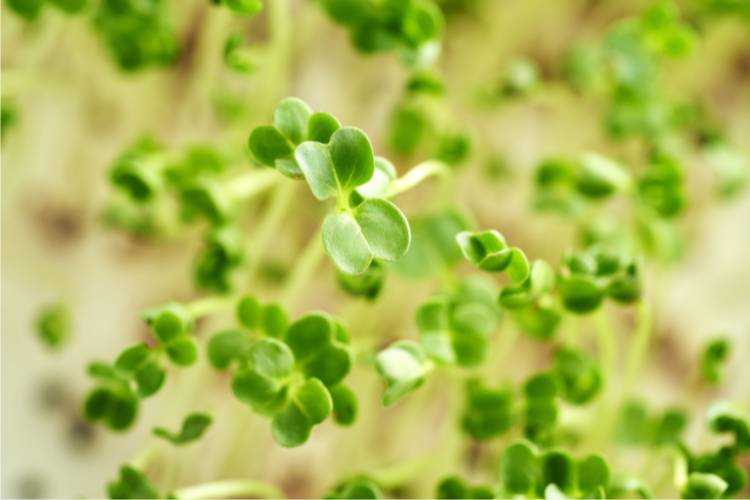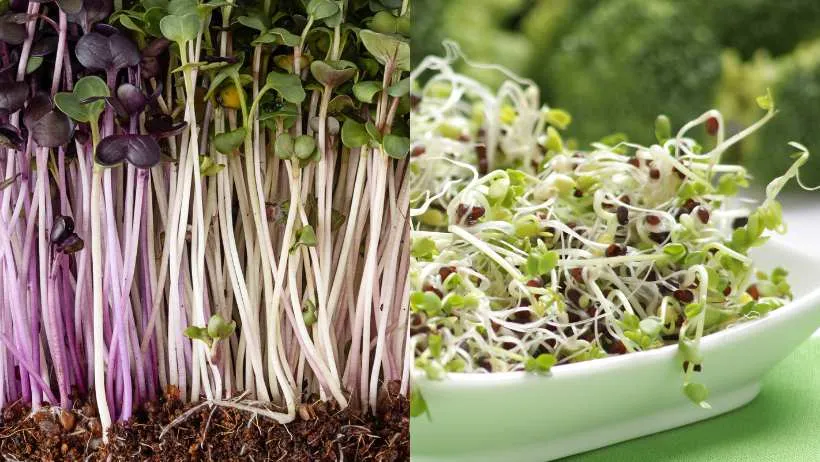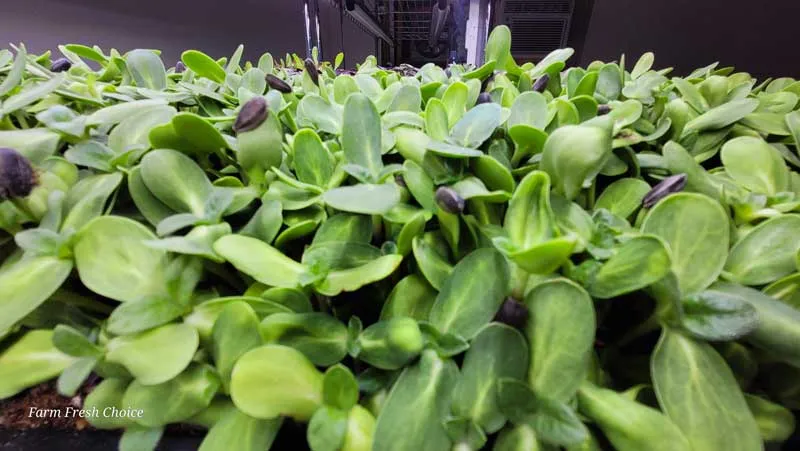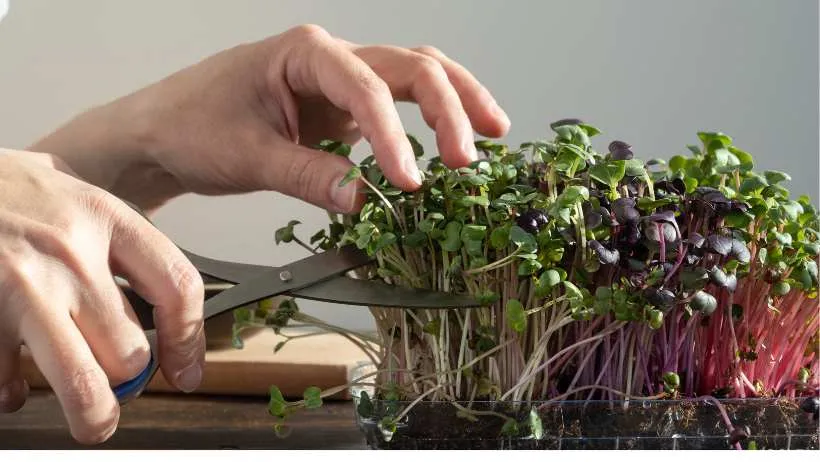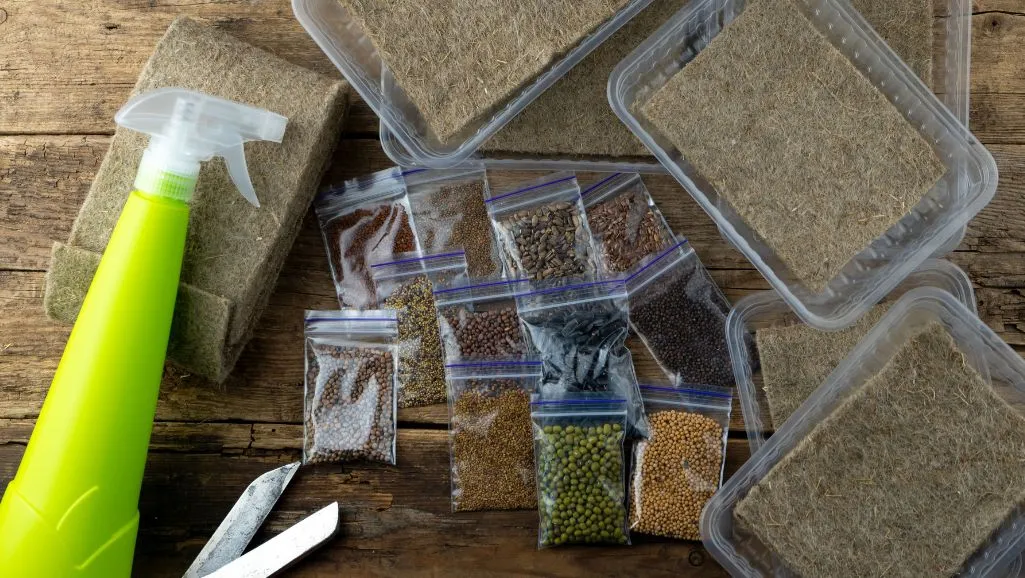Did you know that broccoli microgreens contain up to 40 times more nutrients than mature broccoli? That’s right! These tiny powerhouses are packed with flavor and bursting with health benefits. As a microgreens grower, I’m excited to share my knowledge. In this guide, we’ll dive into everything you need to know about growing broccoli microgreens right in your own home. From essential supplies to step-by-step instructions and common pitfalls to avoid, I’ve got you covered. Let’s get growing!
Essential Supplies for Growing Broccoli Microgreens
Alright, folks, let’s talk supplies! Trust me, if you start growing your own broccoli microgreens, not having the right gear can make or break your microgreen game. First up, you’ll need growing trays. I started with old takeout containers, but I quickly upgraded to proper seedling trays with drainage holes. Game-changer!
Next, get yourself some high-quality broccoli microgreen seeds. For your growing medium, you’ve got options. I prefer organic potting soil. If you are using a hydroponic system, you would skip this part.
A spray bottle is essential for gentle watering. I learned this after nearly drowning my first batch with a watering can. Oops!
If you’re growing indoors like me, invest in some decent grow lights. I tried using just windowsill light at first, and let’s say my microgreens looked more micro than green.
Lastly, grab some sharp scissors or a harvesting knife. Your future self will thank you when it’s time to reap the rewards of your hard work!
Step-by-Step Guide to Growing Broccoli Microgreens
Alright, let’s get our hands dirty! First things first, clean your growing area. I once skipped this step and ended up with a mold problem. Not fun!
Next, prepare your growing medium. If you’re using soil like me, moisten it slightly. Think damp sponge, not swamp.
Now, sprinkle those seeds evenly over the surface. I used to be stingy with seeds, but trust me, you’re after a dense canopy. Don’t be shy!
Cover your tray with another or a dome to create a dark, humid environment. This is like tucking your seeds in for a cozy nap.
Water gently using your spray bottle. Remember, we’re aiming for consistent moisture, not a pool party.
Once you see little sprouts popping up (usually around day 3-4), it’s showtime! Remove the cover and give them some light. I keep my grow lights about 4-6 inches above the trays.
At this point, I start bottom watering. Lift the top tray with holes and add about one cup of water to the bottom tray daily. As they grow larger, you will need to water twice daily, making sure the soil stays moist but not waterlogged. Before you know it, you’ll have a tray of beautiful broccoli microgreens ready for harvest!
Harvesting Your Broccoli Microgreens
Harvesting is where the magic happens, folks! Timing is everything here. You’ll want to wait until your microgreens are about 2-3 inches tall, usually around day 7-10.
Grab your sharp scissors or harvesting knife when it’s time to harvest. Cut the stems just above the soil line in one clean sweep. After harvesting, give your microgreens a gentle rinse. I use a colander and cool water. Be careful not to bruise them—they’re delicate little things!
I wrap them loosely in paper towels and store them in an airtight container in the fridge. They’ll stay fresh for about a week, but trust me, they rarely last that long in my house!
Recommended Post: Why Are Microgreens So Expensive
Common Mistakes to Avoid When Growing Broccoli Microgreens
Let me tell you, I’ve made every mistake in the book when it comes to growing microgreens. But hey, that’s how we learn, right?
Overwatering is a biggie. I used to think more water meant happier plants. Nope! Too much water leads to mold and rot. Stick to light, frequent misting.
On the flip side, don’t let your soil dry out completely. I once forgot about my trays for a day, and my poor microgreens looked like they’d been through a drought!
Air circulation is crucial. I learned this the hard way when I crammed too many trays in a small space. The result? It’s a moldy mess. Give your greens room to breathe!
Seed density is tricky to master. Too sparse, and you’ll have a pitiful harvest. Too dense, and your greens will compete for resources. About 1 1/2 to 2 tablespoons per 10×20-inch tray works well.
Lastly, don’t wait too long to harvest. Stick to that 7-10-day window for the best flavor and nutrition!
Maximizing Your Broccoli Microgreen Yield
Want to take your microgreen game to the next level? I’ve got some pro tips for you!
First up, nail that seed density. After much trial and error, I’ve found that a dense canopy yields the best results. Don’t be afraid to use more seeds than you think you need.
Which are the best growing conditions for broccoli microgreens?
Temperature and humidity are key players. I keep my growing area around 74°F with about 50% humidity. A small hygrometer can be a great investment here.
When it comes to nutrition, less is often more with microgreens. I used to think fertilizing would give me bigger yields, but it led to leggy, less flavorful greens. Now, I stick to a high-quality organic potting mix and let nature do it.
Lastly, don’t underestimate the power of succession planting. Starting new trays every few days ensures a constant supply of fresh microgreens. Trust me, you won’t want to run out once you start eating these regularly!
Benefits and Culinary Uses of Broccoli Microgreens
Let me tell you, these little greens are nutritional powerhouses! They’re packed with vitamins C, E, and K, not to mention a hefty dose of antioxidants. The flavor and health benefits keep you coming back for more.
Broccoli microgreens are particularly high in sulforaphane, a compound known for its potential cancer-fighting properties. It’s pretty impressive for something so tiny.
What’s the best way to consume microgreens?
These greens are incredibly versatile in the kitchen. Add them to your morning smoothies for an extra nutrient boost. They also add a delightful crunch and fresh broccoli flavor to sandwiches and wraps.
What’s the best way to consume microgreens? One of my favorite ways to use them is as a garnish for soups and salads. Their vibrant color and freshness instantly elevate any dish.
I’ve even started using them in pesto! Just swap out some of the basil for broccoli microgreens. It’s a game-changer, trust me.
Remember, heat can diminish some nutritional benefits, so I prefer to use them raw or add them at the end of cooking. Happy eating!
Final Thoughts
And there you have it, folks! Growing broccoli microgreens at home is a rewarding journey that offers culinary delight and nutritional benefits. From selecting the right supplies to mastering the growing process and avoiding common pitfalls, you’re now equipped with all the knowledge you need to start your microgreen adventure. Gardening is all about learning and adapting, so don’t be discouraged if your first attempt isn’t perfect. Keep at it; before you know it, you’ll be harvesting trays of nutritious, homegrown broccoli microgreens. Happy growing!
FAQ’s
What is the best medium to grow broccoli microgreens in?
The optimal medium to grow broccoli microgreens depends on various factors. Many growers prefer organic potting soil for its balanced nutrition and moisture retention. However, soilless mediums like coconut coir or peat moss offer excellent drainage and prevent soil-borne diseases. Hydroponic systems using grow mats or hemp pads provide clean, controlled environments. Each option has merits, so experimentation might be necessary to determine which works best for your growing conditions and preferences.
Can you eat broccoli microgreens raw?
Consuming broccoli microgreens raw is not only safe but highly recommended. These tender greens retain maximum nutritional value when eaten uncooked. Raw broccoli microgreens offer a crisp texture and mild, peppery flavor that enhances salads, sandwiches, and smoothies. They’re packed with vitamins, minerals, and antioxidants, making them a nutritious addition to any diet. Washing them thoroughly before consumption ensures food safety and removes any potential debris from the growing process.
Will broccoli microgreens regrow after cutting?
Broccoli microgreens typically do not regrow after harvesting. Unlike some herbs or leafy greens, microgreens are harvested by cutting the stems close to the soil level, which removes the growing points. The remaining roots and stem bases lack the energy reserves and growth mechanisms to produce new shoots. For continuous harvests, it’s recommended to practice succession planting, starting new trays every few days. This method ensures a steady supply of fresh microgreens.
What are some tips to prevent mold in broccoli microgreens?
Preventing mold in broccoli microgreens involves several key practices. Ensure proper air circulation by using fans or spacing trays adequately. Avoid overwatering; maintain slightly moist soil without waterlogging. Sanitize growing equipment and use sterile growing mediums. Consider bottom watering to keep the surface drier. Maintain appropriate humidity levels, ideally between 40-50%. Use quality seeds and avoid overcrowding. If mold appears, remove affected areas immediately to prevent spread. These measures significantly reduce the risk of mold development.
Why doesn’t broccoli microgreens germinate properly?
Improper germination of broccoli microgreens can stem from various issues. Poor seed quality or old seeds may have low viability. Incorrect soil moisture levels, either too dry or waterlogged, can hinder germination. Temperature fluctuations outside the optimal range (60-70°F) may affect seed activation. Burying seeds too deeply prevents proper emergence. Over-compacted growing medium restricts root development. Inadequate darkness during the initial germination phase can also impede the process. Addressing these factors often resolves germination problems.
Why doesn’t broccoli microgreens grow tall enough?
Insufficient height in broccoli microgreens can result from several factors. Inadequate lighting leads to leggy, weak growth rather than robust, compact plants. Overcrowding in the growing tray limits individual plant development. Nutrient deficiencies in the growing medium can stunt growth. Temperature extremes, either too hot or cold, may slow metabolic processes. Harvesting too early, before the microgreens reach their full potential, results in shorter plants. Addressing these issues by optimizing growing conditions often leads to taller, healthier microgreens.
Why does broccoli microgreens mold easily?
Broccoli microgreens’ susceptibility to mold stems from several factors. High humidity and poor air circulation create ideal conditions for fungal growth. Overwatering, especially on the surface, provides excess moisture for mold spores. Overcrowded trays restrict airflow between plants. Using non-sterile growing mediums or contaminated equipment introduces mold spores.
Inadequate light exposure weakens plants, making them more vulnerable to mold. Fluctuating temperatures can cause condensation, further promoting mold growth. Addressing these issues significantly reduces the likelihood of mold development in broccoli microgreens.

